1904
Egon Eiermann was born on September 29, 1904, in Neuendorf, now a part of Potsdam-Babelsberg.
Egon Eiermann (1904–1970), architect and furniture designer: For Eiermann furnishings are part of the overall architectural concept.
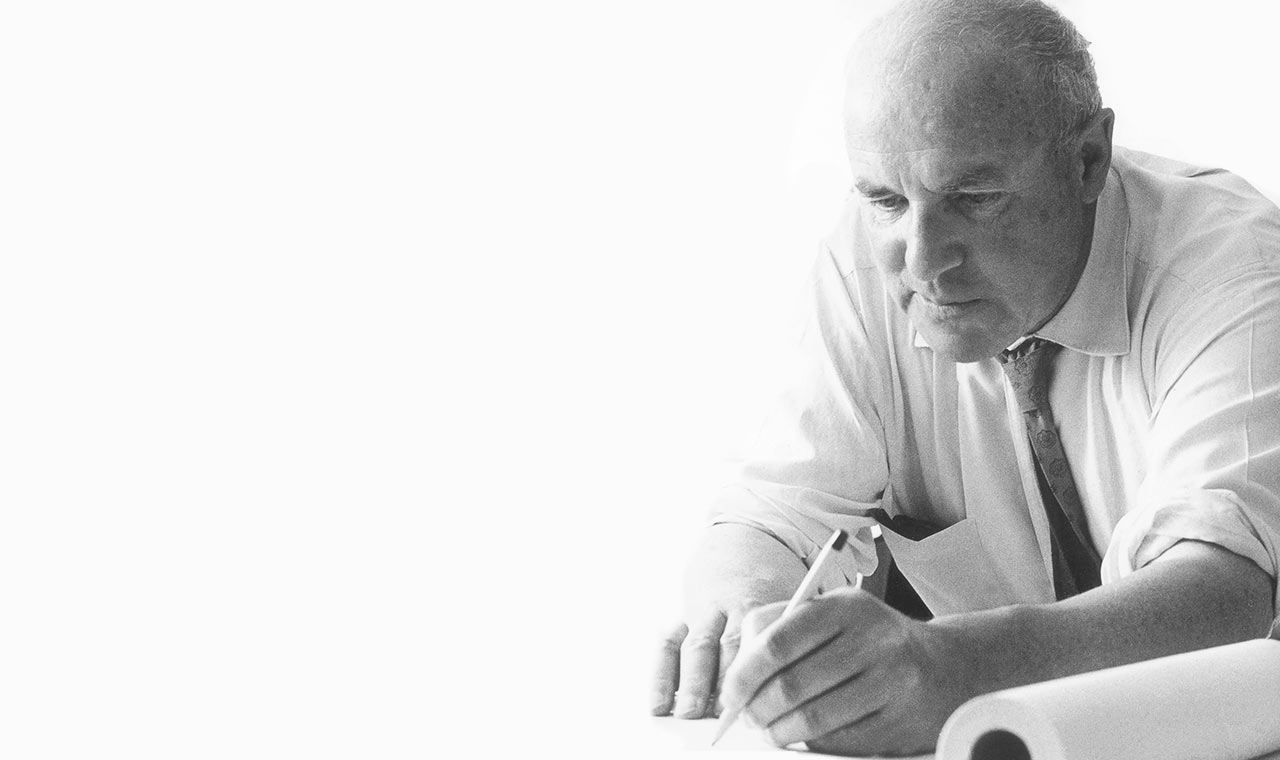
Egon Eiermann was born on September 29, 1904, in Neuendorf, now a part of Potsdam-Babelsberg.
Eiermann was already gaining building experience before he started his studies.
After his studies, Egon Eiermann goes to the construction office of Karstadt AG. Thereafter, to the electric company.
Eiermann became a member of the German Werkbund and the Bund Deutscher Architekten. He started his own architect’s office.
Eiermann designed “Gebt mir vier Jahre Zeit” [Give me four years] for the propaganda exhibition. From 1938 onwards his office was designing industrial buildings.
Seat and back optimally adapted to the human shape: The SE 42 three-legged chair consists completely of molded wood; a unique innovation with highly distinctive lines.
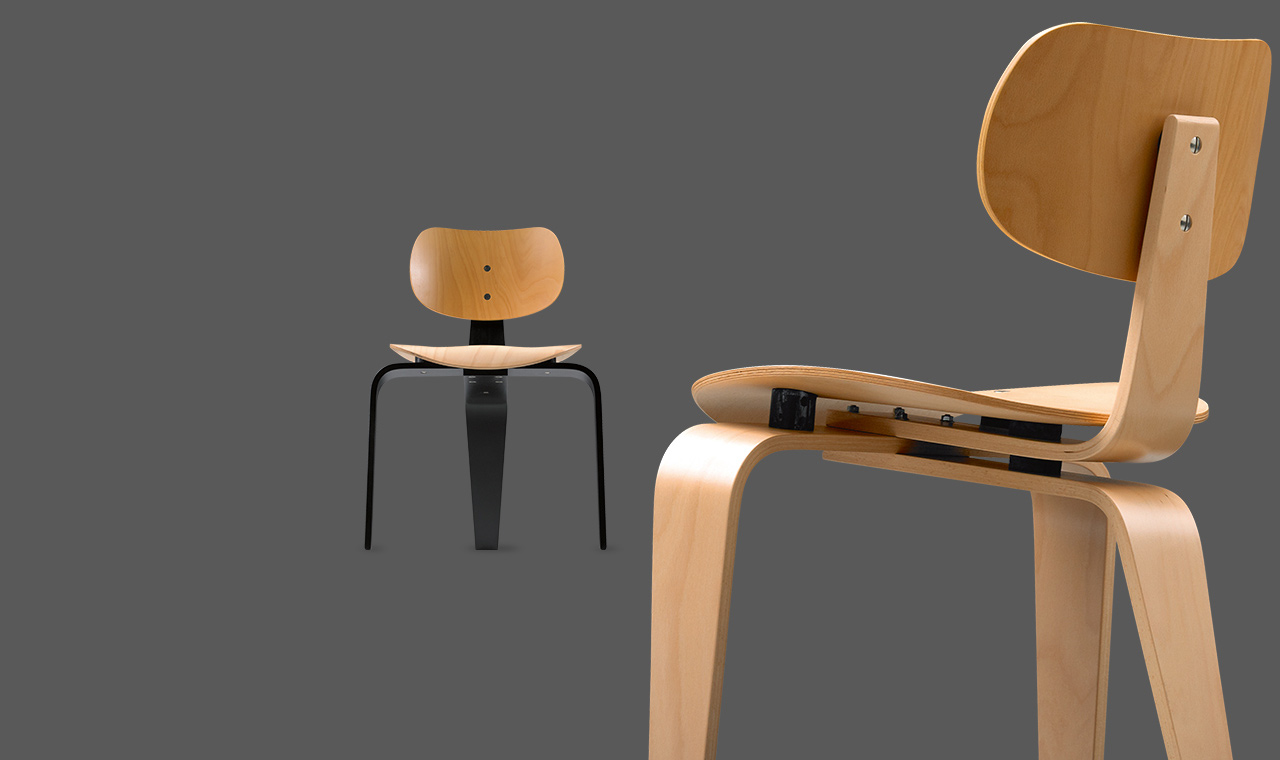
When his Berlin office suffered war damage, Eiermann made a new start as an architect in Mosbach (Odenwald).
Egon Eiermann was appointed to the chair of architecture at the Karlsruhe Technische Hochschule.
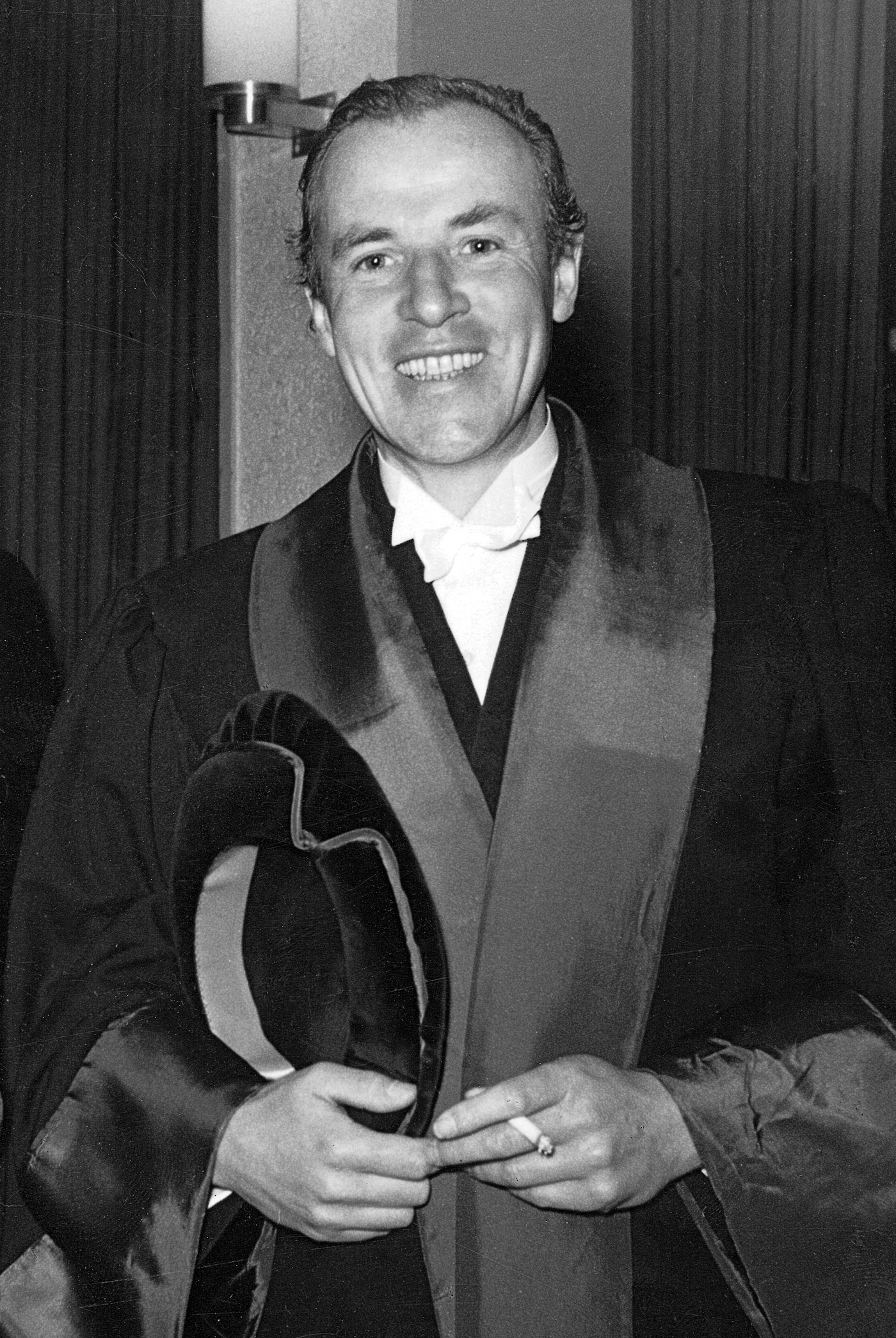
Eiermann moved his architectural office to Karlsruhe, where he worked as an architect until he died.
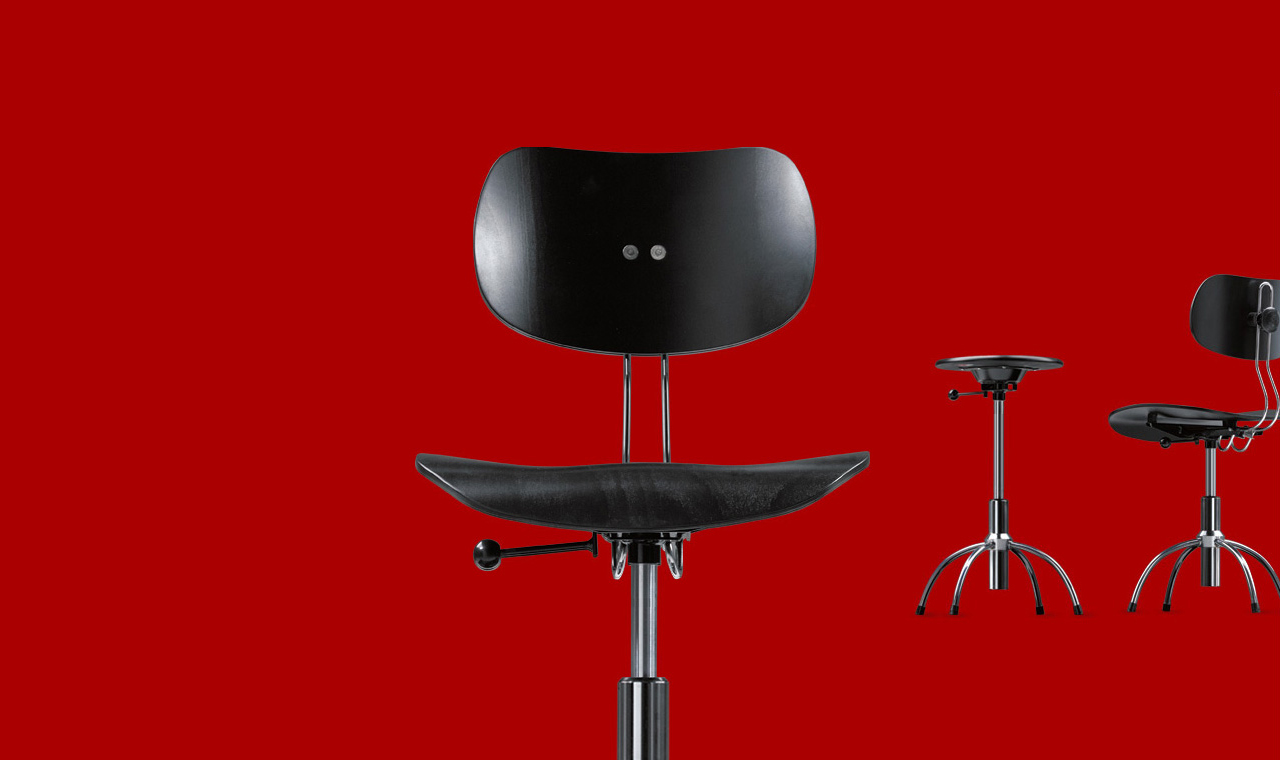
Take a seat please! Swivel stool SE 43 and swivel chair SE 40 resplendent with all the strengths of Eiermann design: These chairs have distinctive presence but are unpretentious.
Stackable stool S 38 S/1 and bar stool SB 38: The delicately shaped seat and slender construction have an elegance that is never obtrusive.
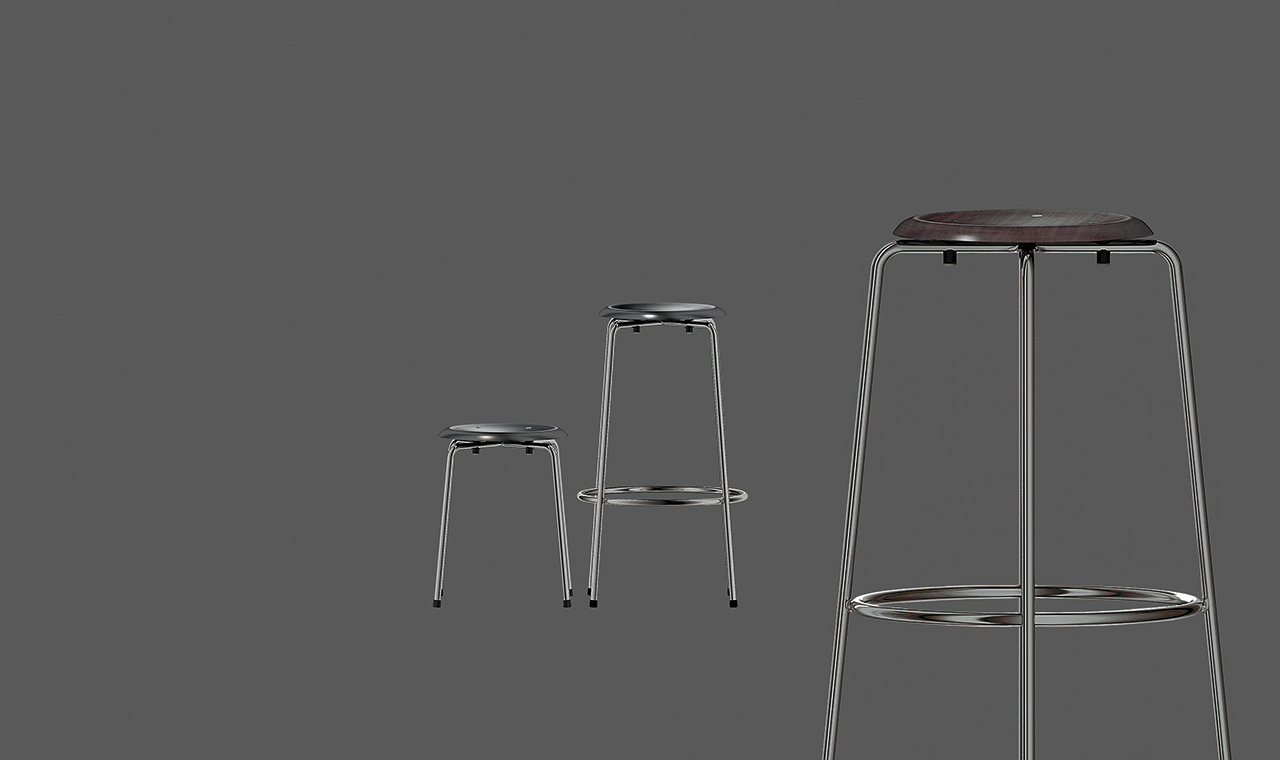
In the USA Eiermann grappled with American design; he met Gropius and Breuer, and later Mies van der Rohe.
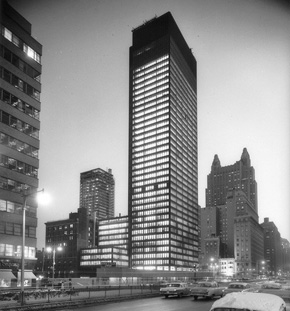
Organically shaped seats and backs made from molded wood: The four-legged chair SE 68 SU is stackable and has a linking device for use in rows in large rooms.
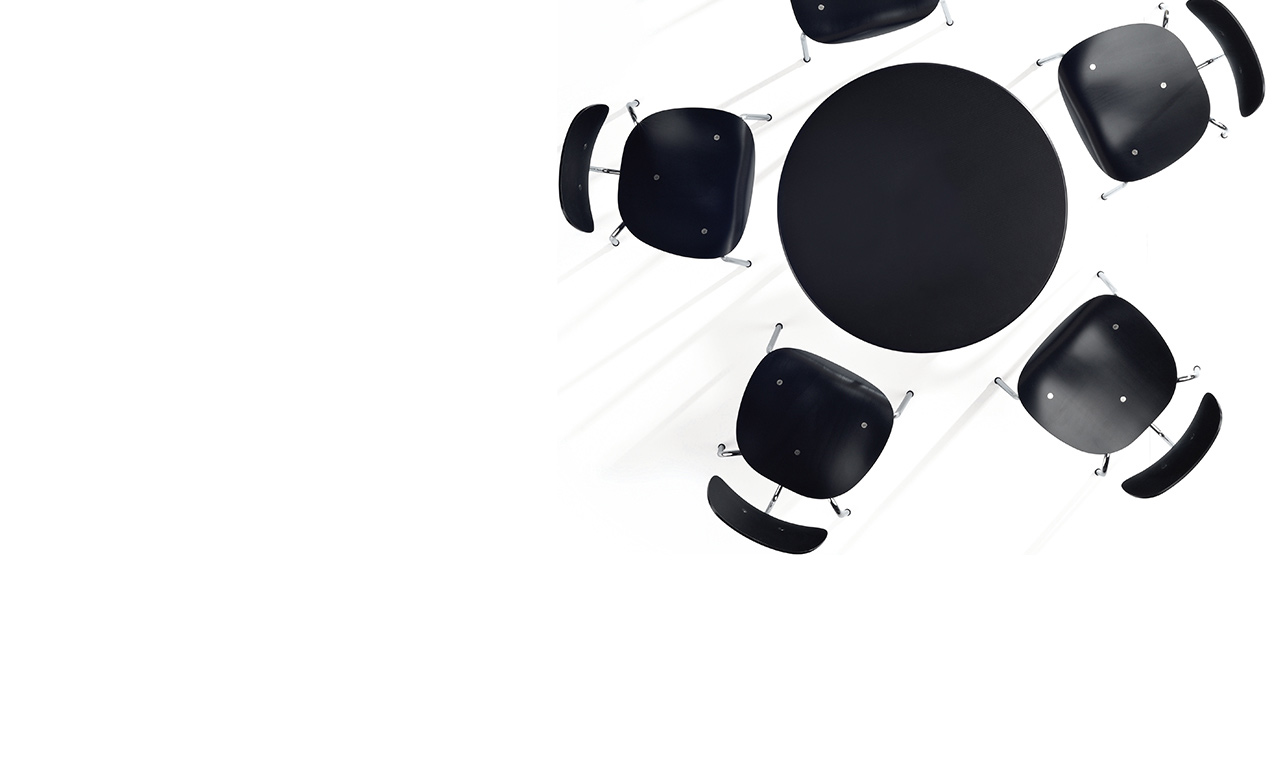
VS developed the wooden skid chair. This school chair classic was frequently copied in subsequent decades.

Minimalistic but with powerfully expressive lines: This classic from 1951 is still cutting edge today. The four-legged chair is also available with armrests and writing tablet.
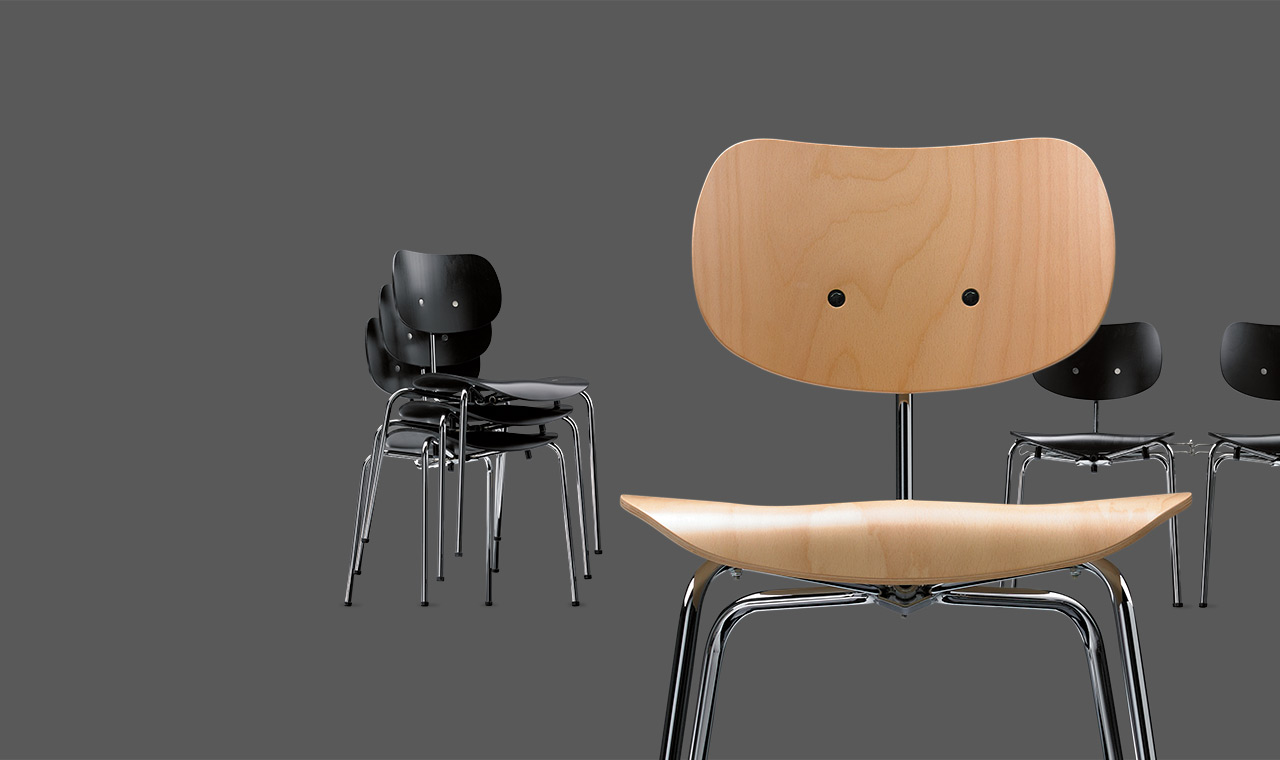
Eiermann’s award-winning handkerchief factory in Blumberg gained recognition; he became the founding member of the German Design Council.
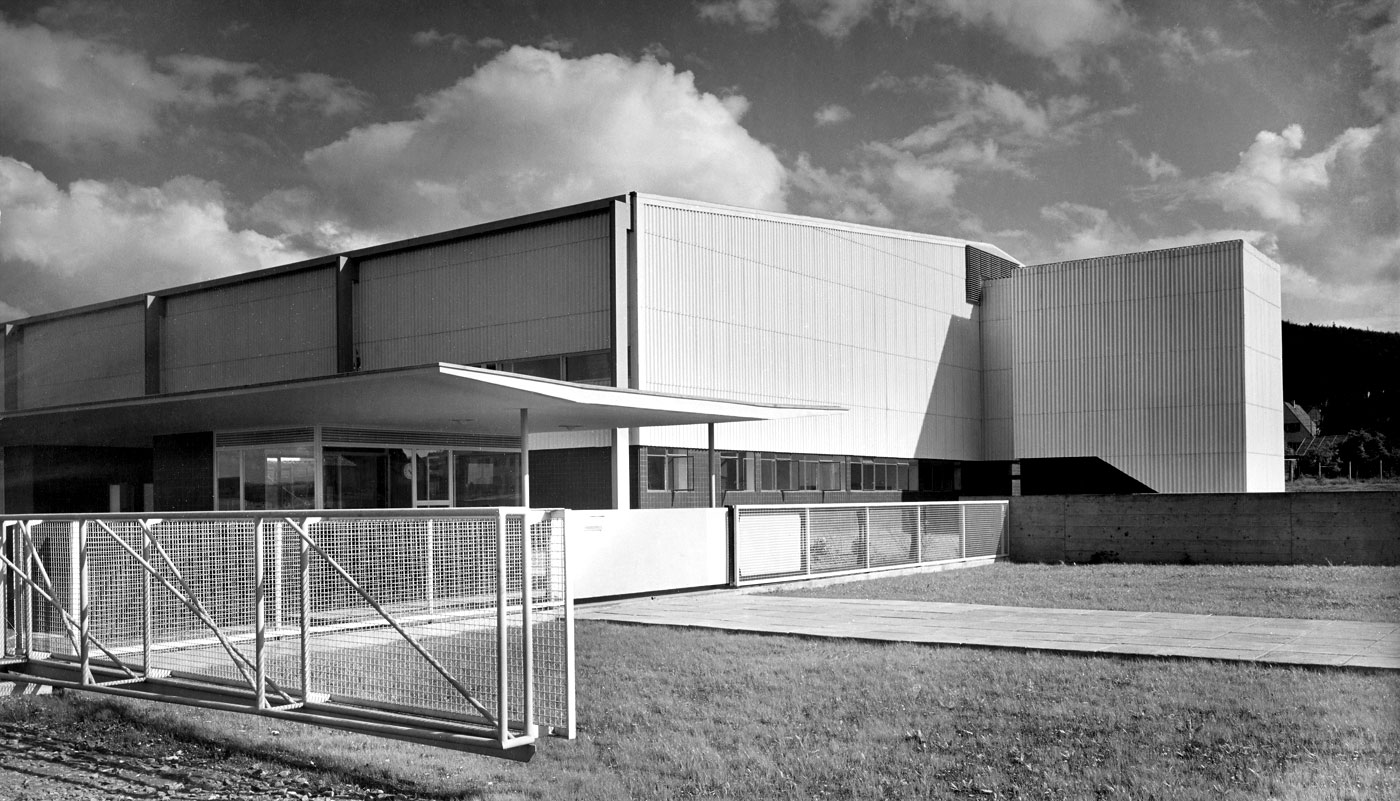
A design program convincingly realized: The couch or café table SE 330 is also light and stable, slender but substantial, refined and modestly informal.
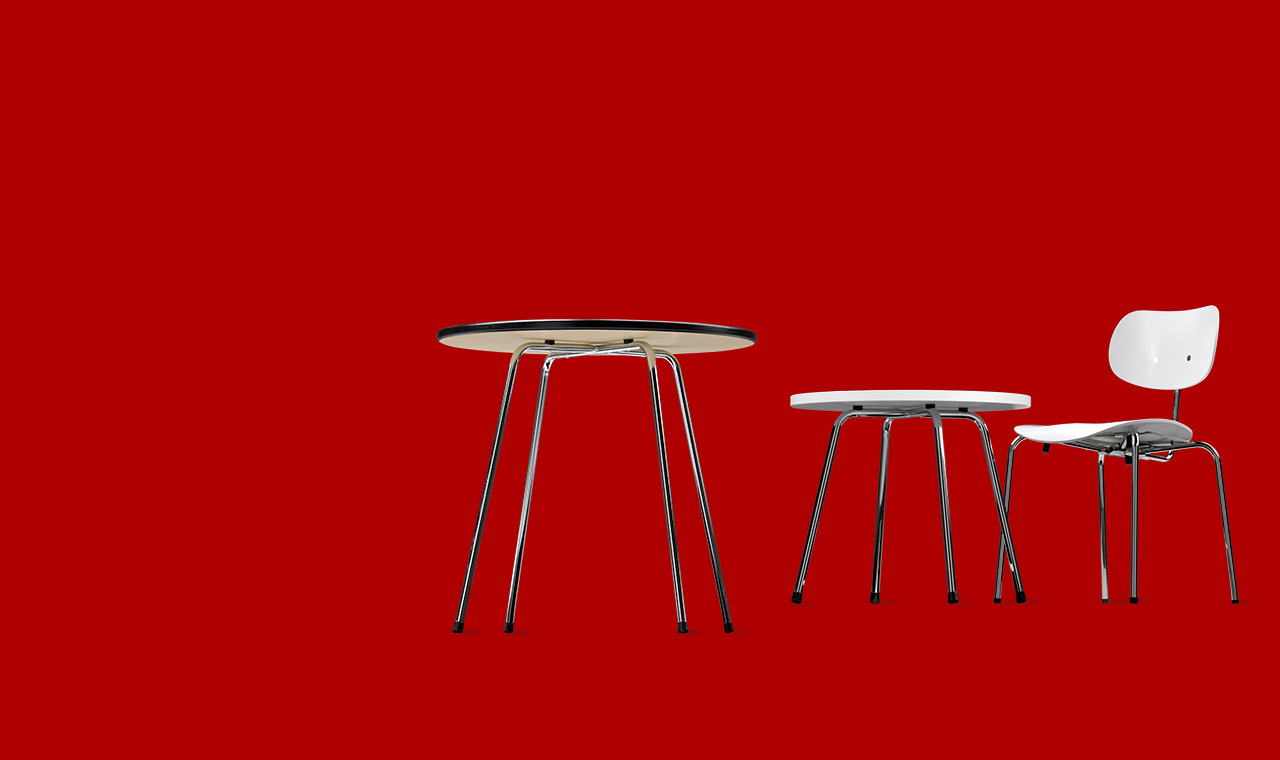
Between 1949 and 1954 those models came into being that today are listed with the pioneering achievements of the 1950s and which ensured Eiermann his place amongst the classics of modern furniture design.
SE 18 Folding chair: In the Museum of Modern Art in New York since 1953, at the Brussels World’s Fair in 1958 – and still today it has not lost an ounce of its original charm.
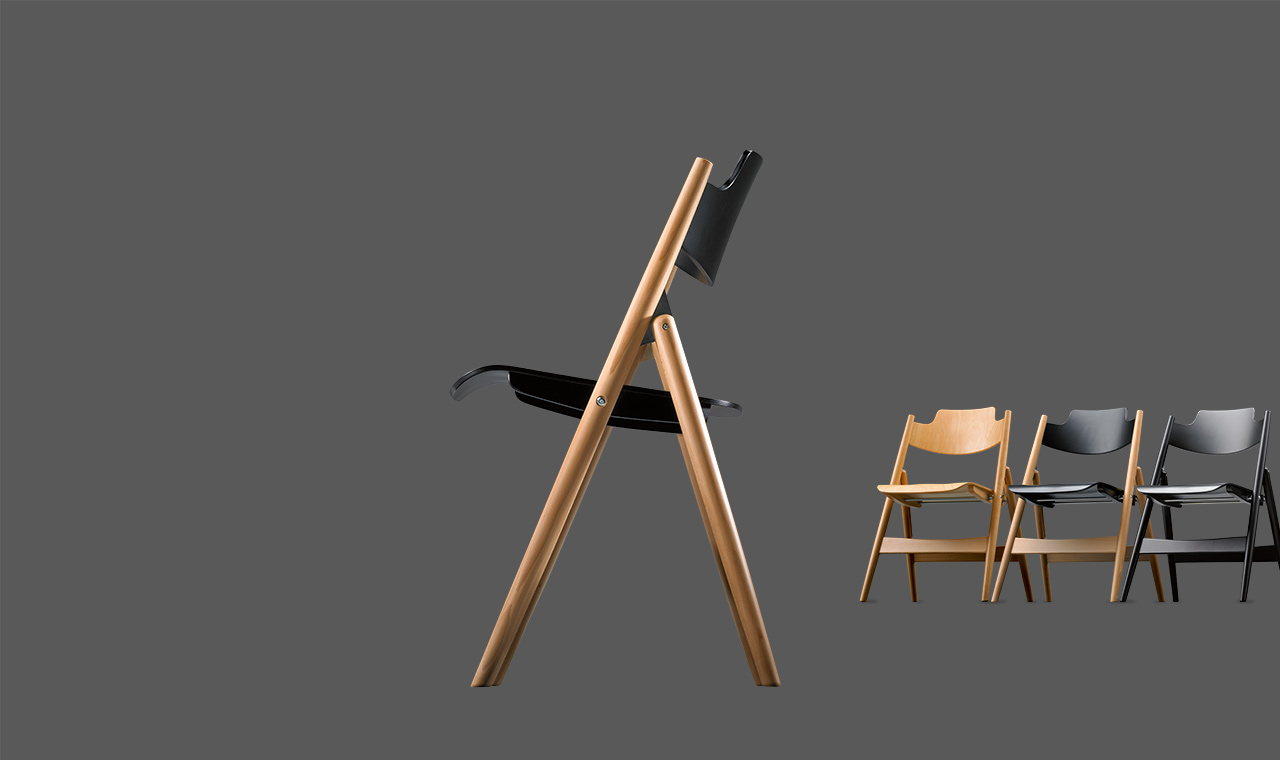
Church of St. Matthews, Pforzheim: Design features included a simple concrete frame structure and wall areas with honeycomb window elements.
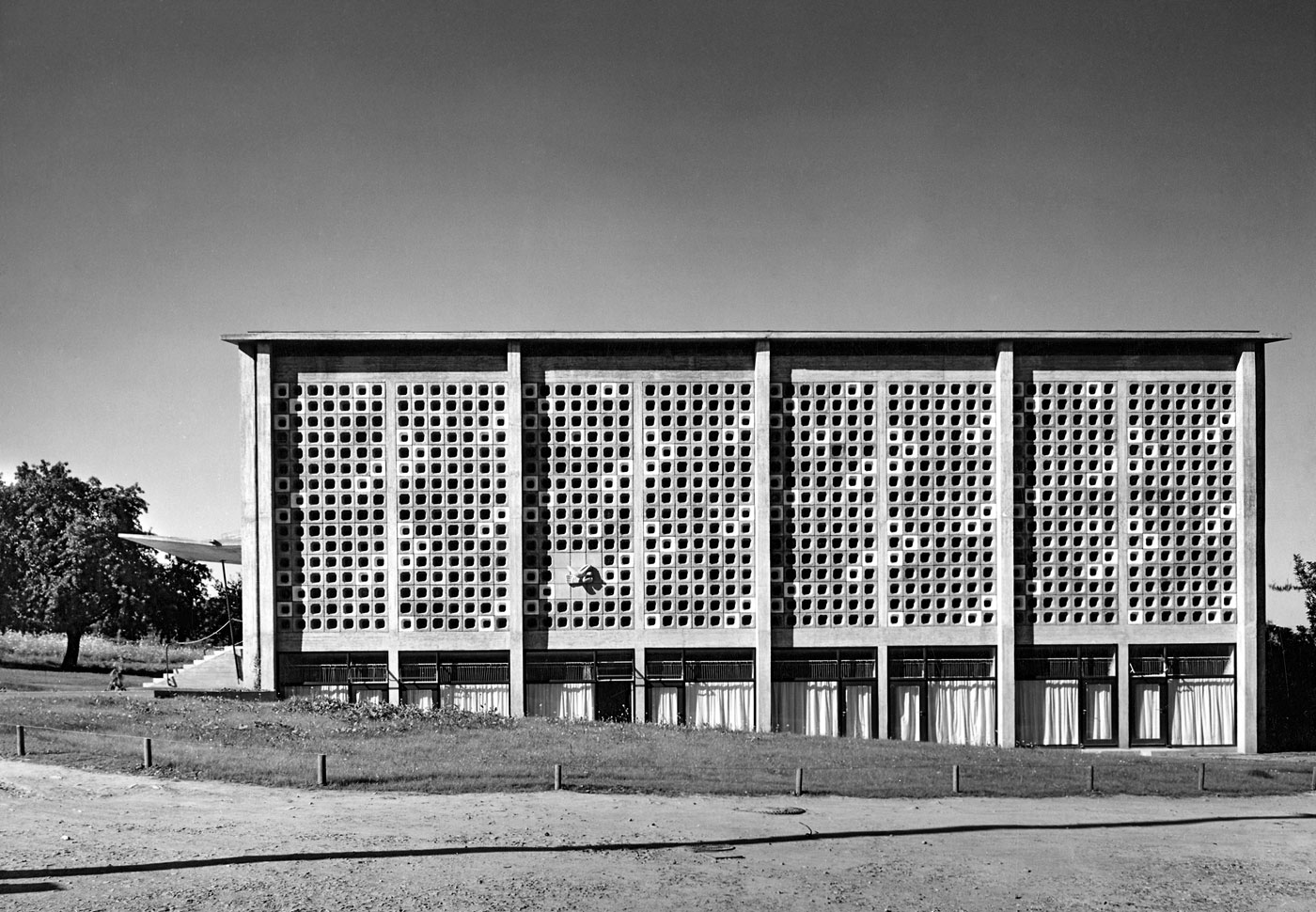
The KN 38 stackable chair, designed by Karl Nothhelfer, with its slender functionality was a decidedly modern chair when VS introduced it on to the market - and it is manufactured still today.
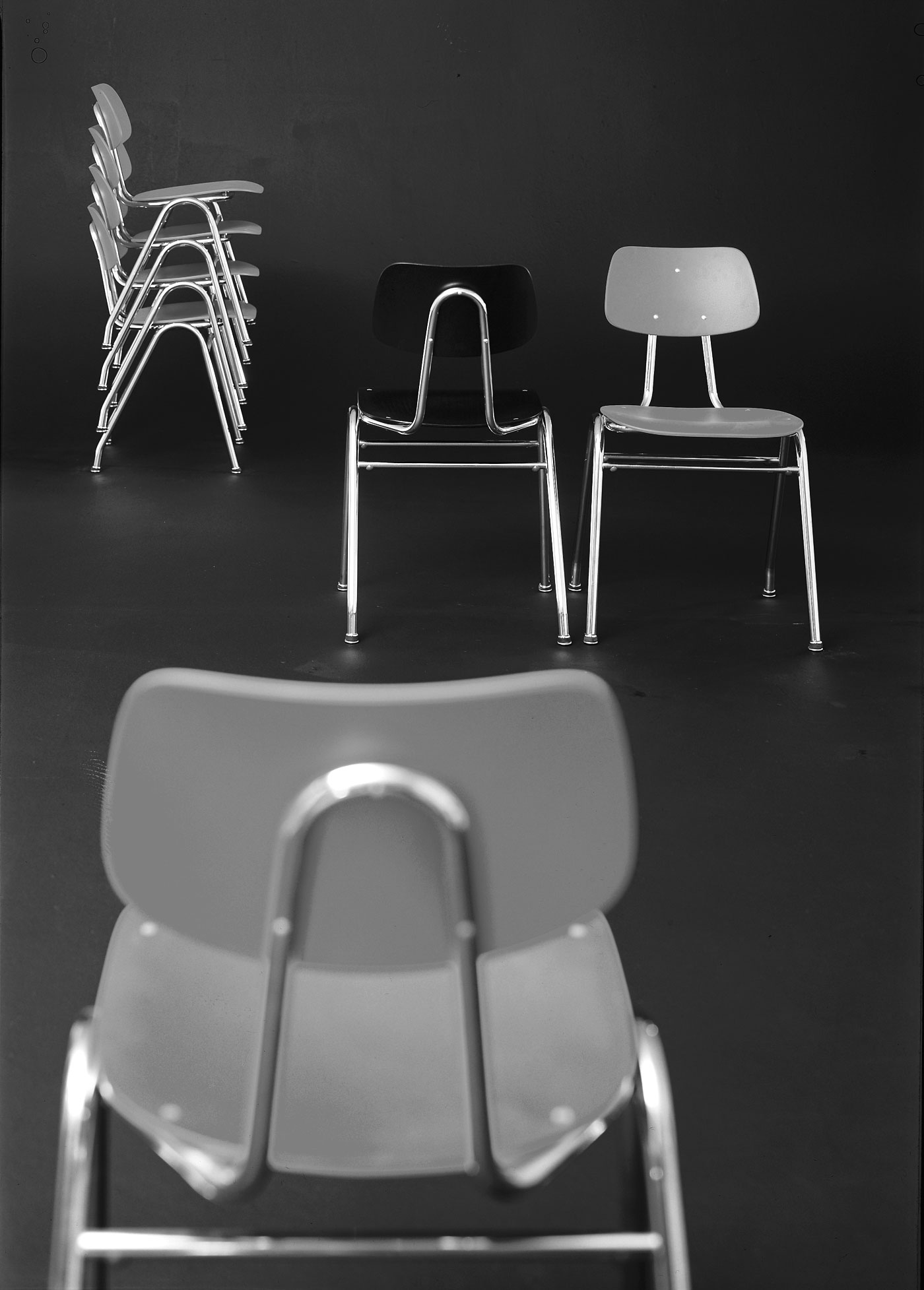

As a stylistically influential college teacher and architect, Eiermann became a member of the Berlin Academy of the Arts.
The new VS administrative building (designed by Karl Nothhelfer) was completed. Its linear, clear concept displays a sure commitment to post-war modernism.
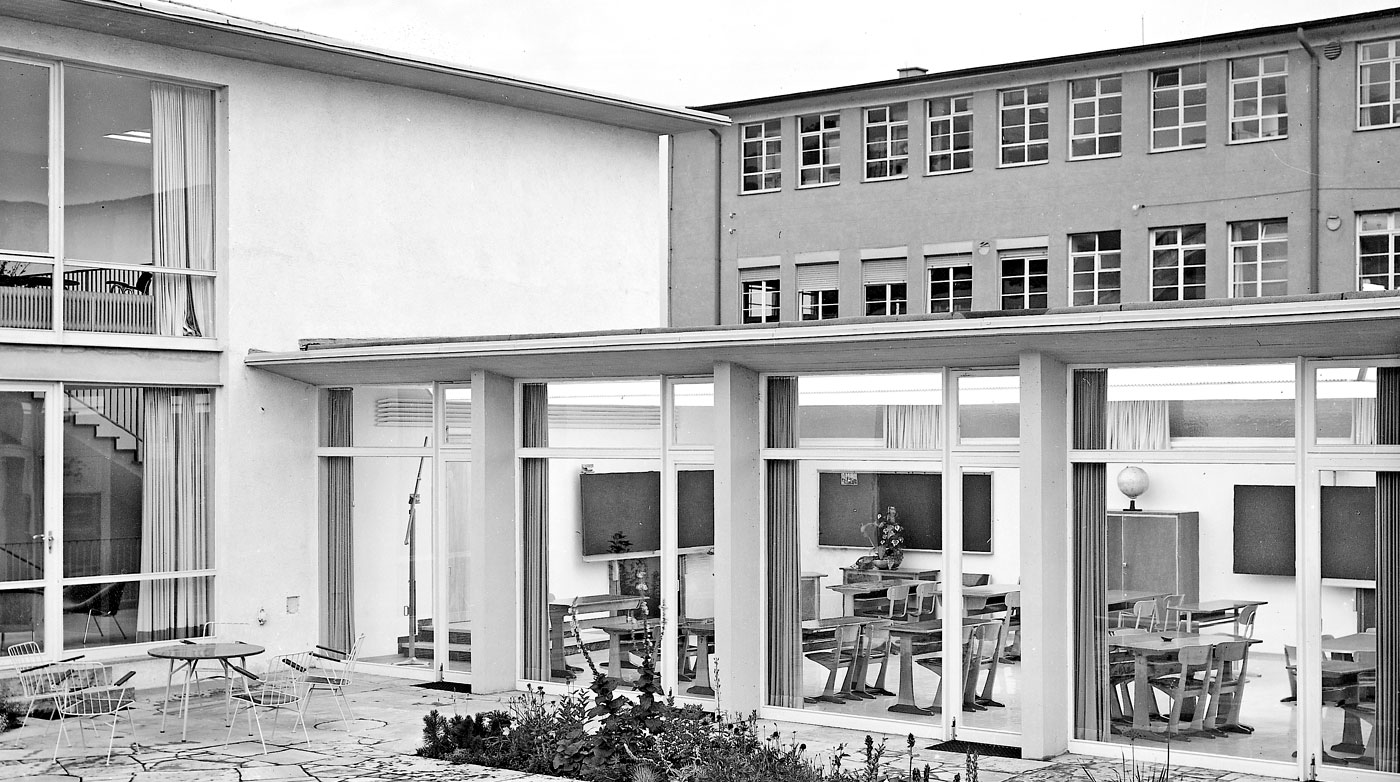

A highpoint in his career: Eiermann with Sep Ruf designed the glass-cube German pavilion for the Brussels World’s Fair.
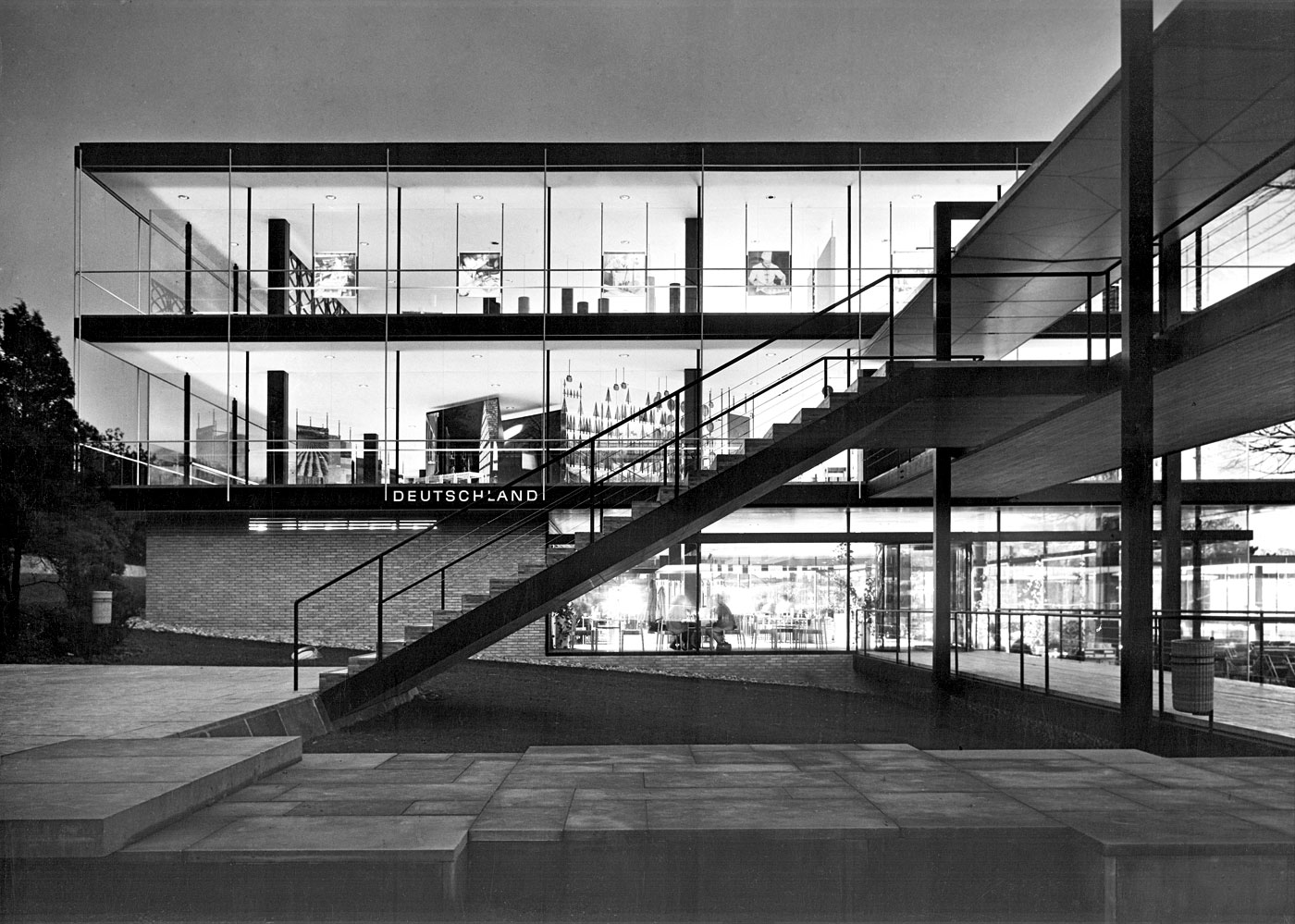
Continuation of modernism: With his non-dogmatic designs aligned with Bauhaus ideals Eiermann determined the image of the young German republic. The internationally renowned German pavilion at the 1958 World’s Fair in Brussels was one of his most significant buildings (in collaboration with Sep Ruf).
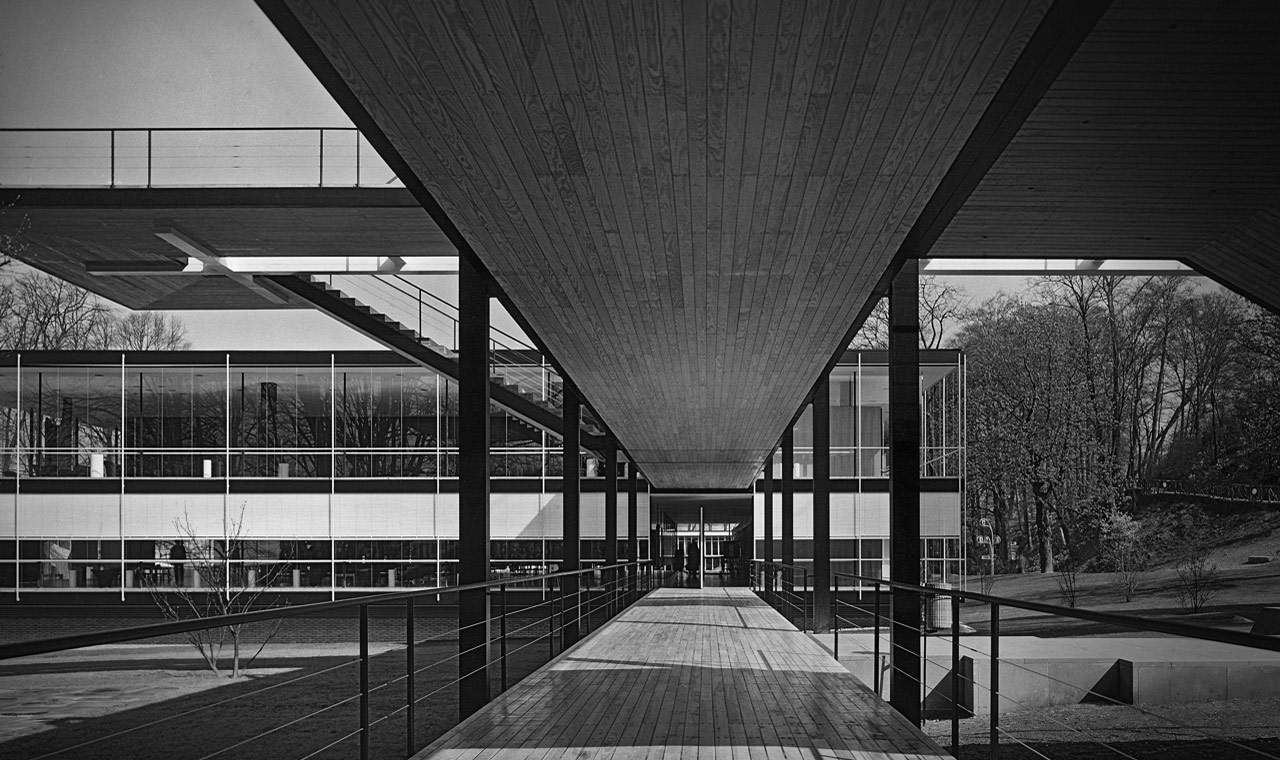
The German pavilion group for the Brussels World’s Fair was designed by Egon Eiermann in collaboration with Sep Ruf. Exhibiting there on the theme of education and learning, VS’s contribution included modern tubular-steel swivel chairs (design Falk Müller).
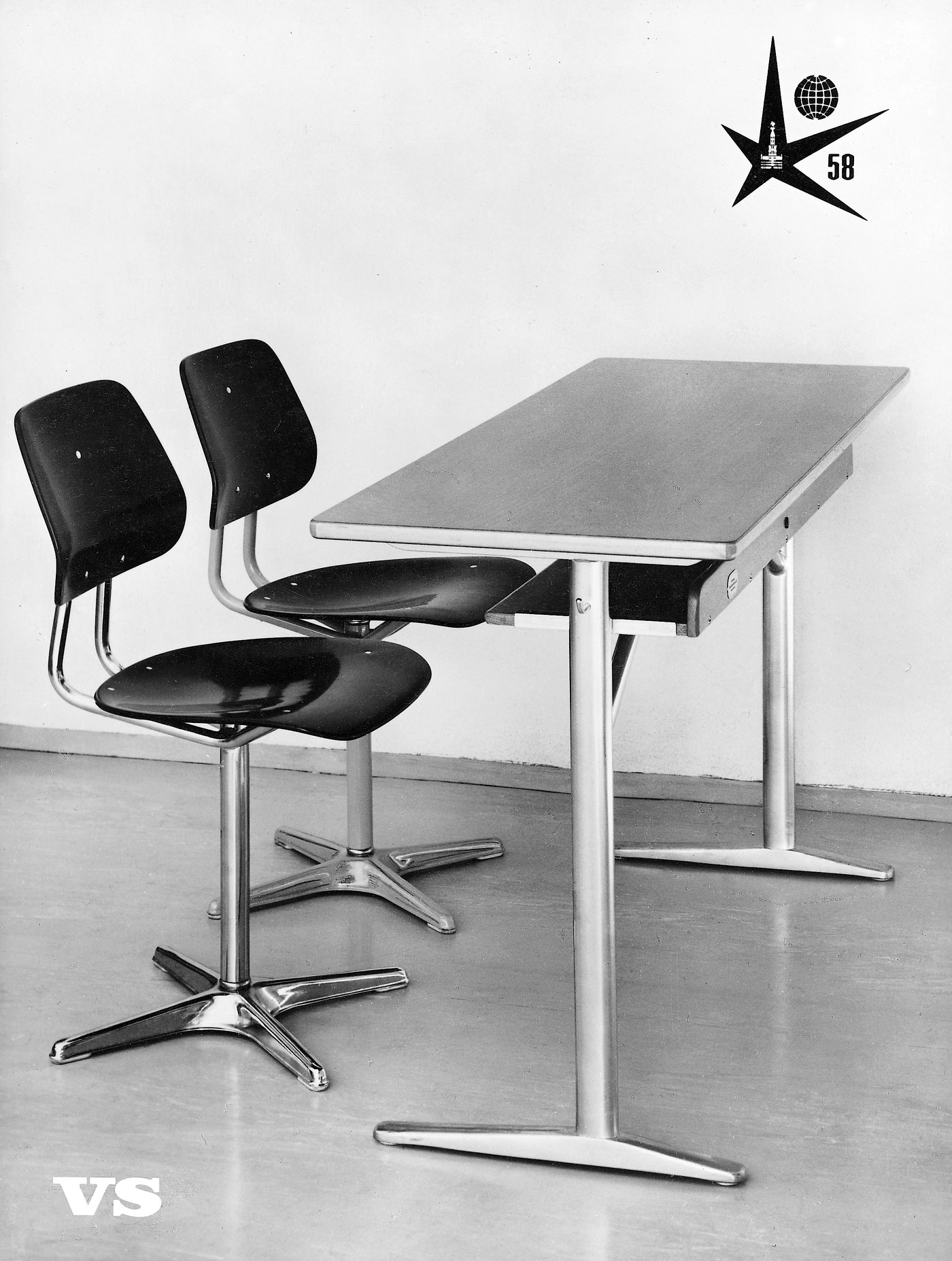

Eiermann built a six-story, 300-meter long company headquarters for Neckermann AG in Frankfurt.
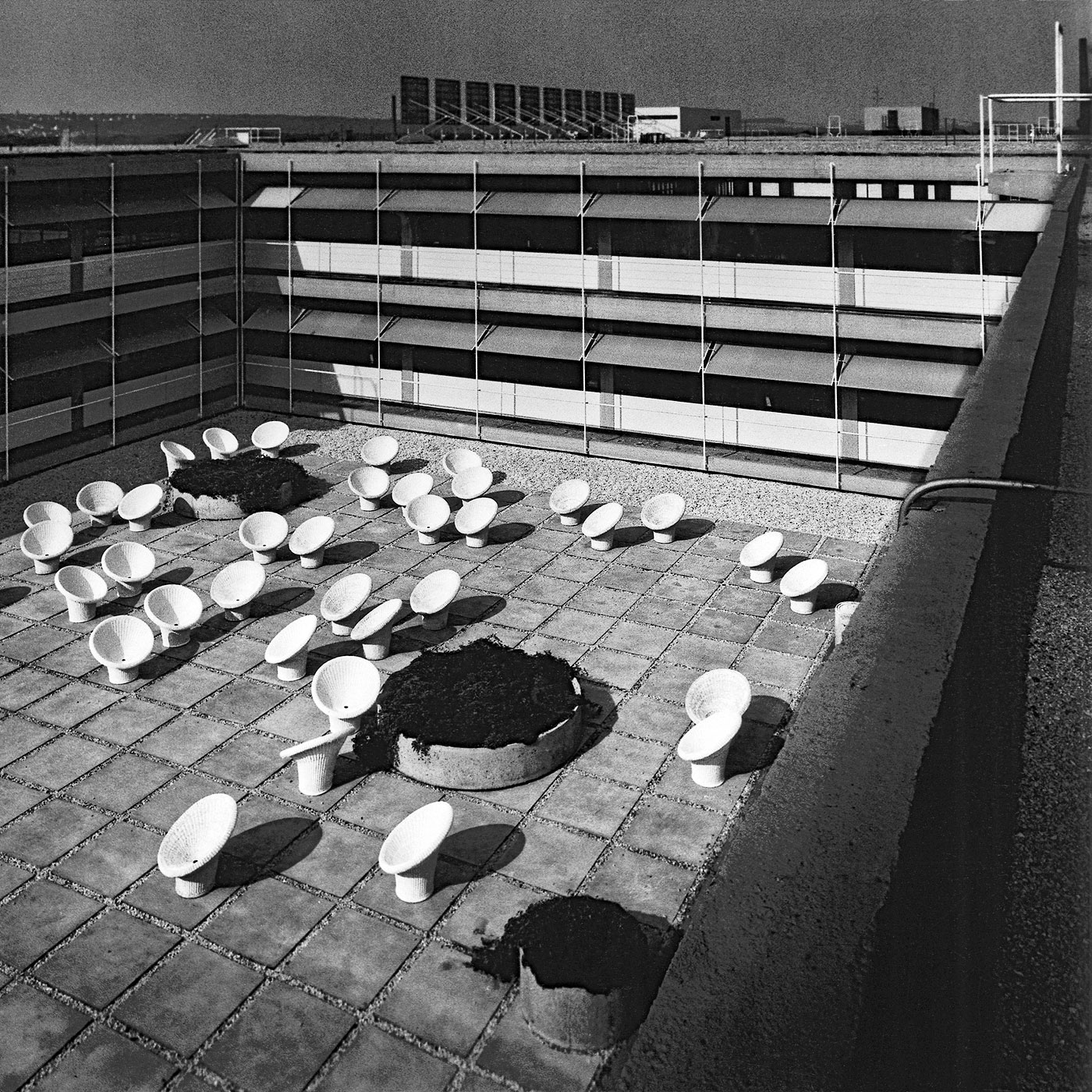
Compellingly functional and the absolute favorite of many architects: For the 1958 World’s Fair, Egon Eiermann created a swivel chair with the special structural form of the Brussels base frame.
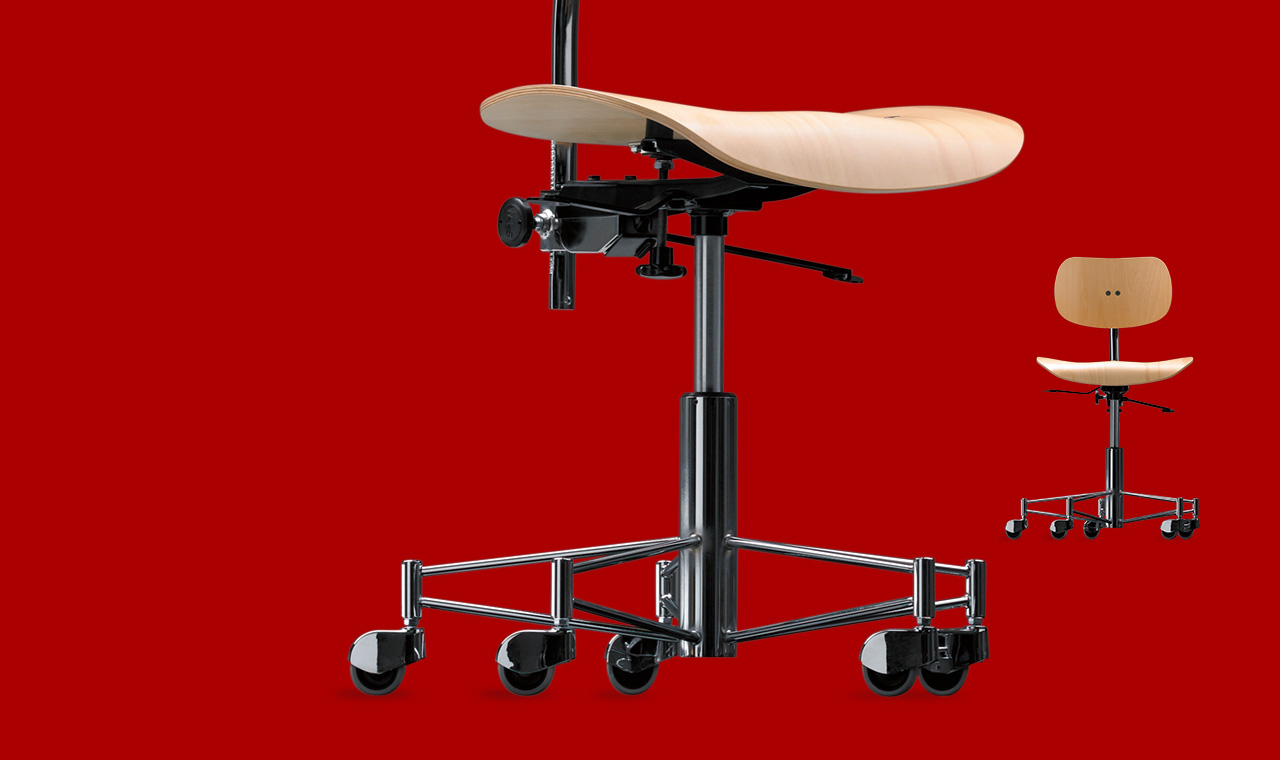
The school was the main topic at the XII Milan Trienniale. The VS swivel chair designed by Falk Müller was amongst the school furniture exhibited in the German section.
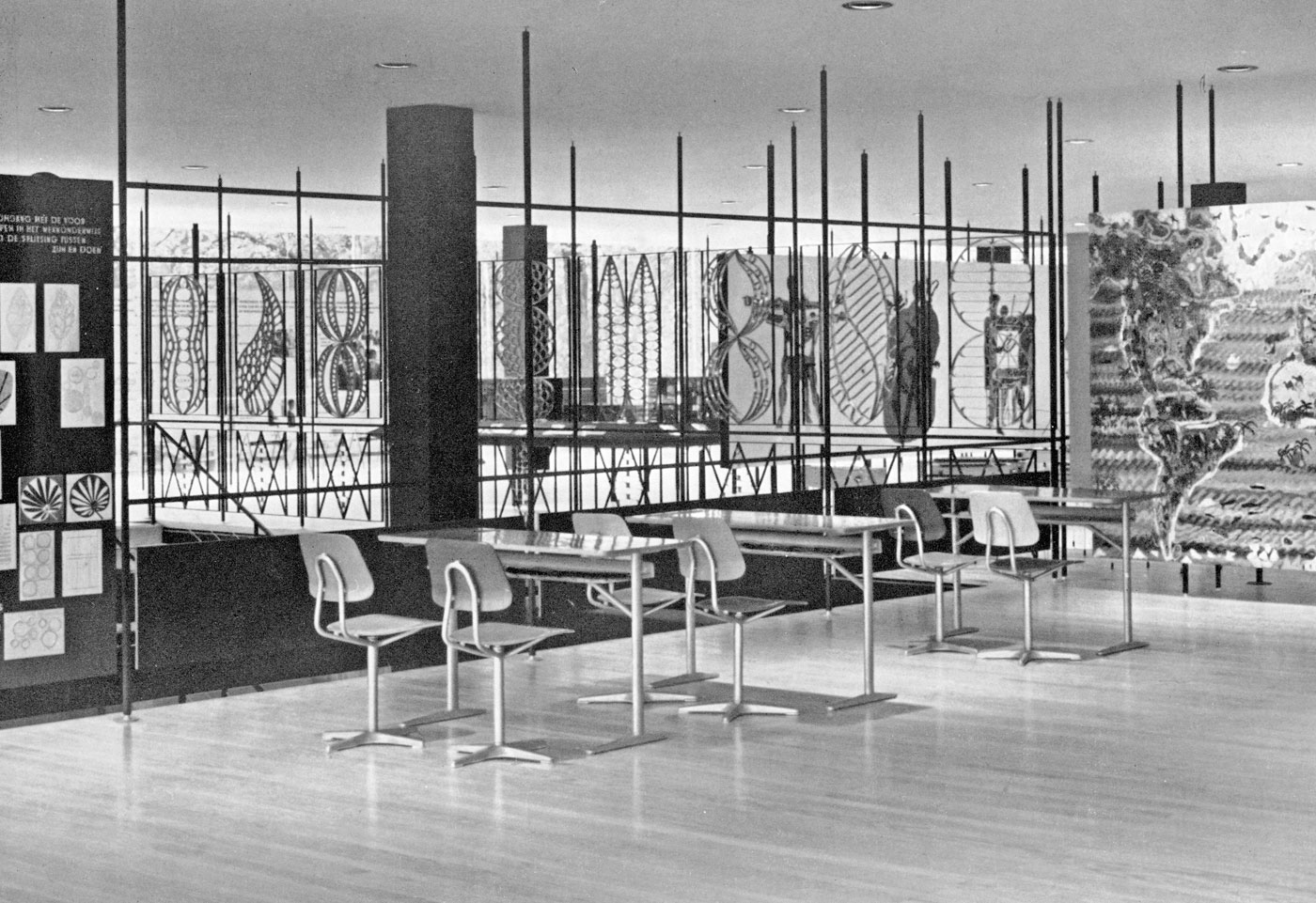

A frequently criticized but distinctive feature of post-war Germany: Horten tiles – ornamental cladding designed by Eiermann for the Horten department store. It allowed for a highly flexible building floor plan and, by means of structural unification, it also provided a consistent corporate identity for the store chain.
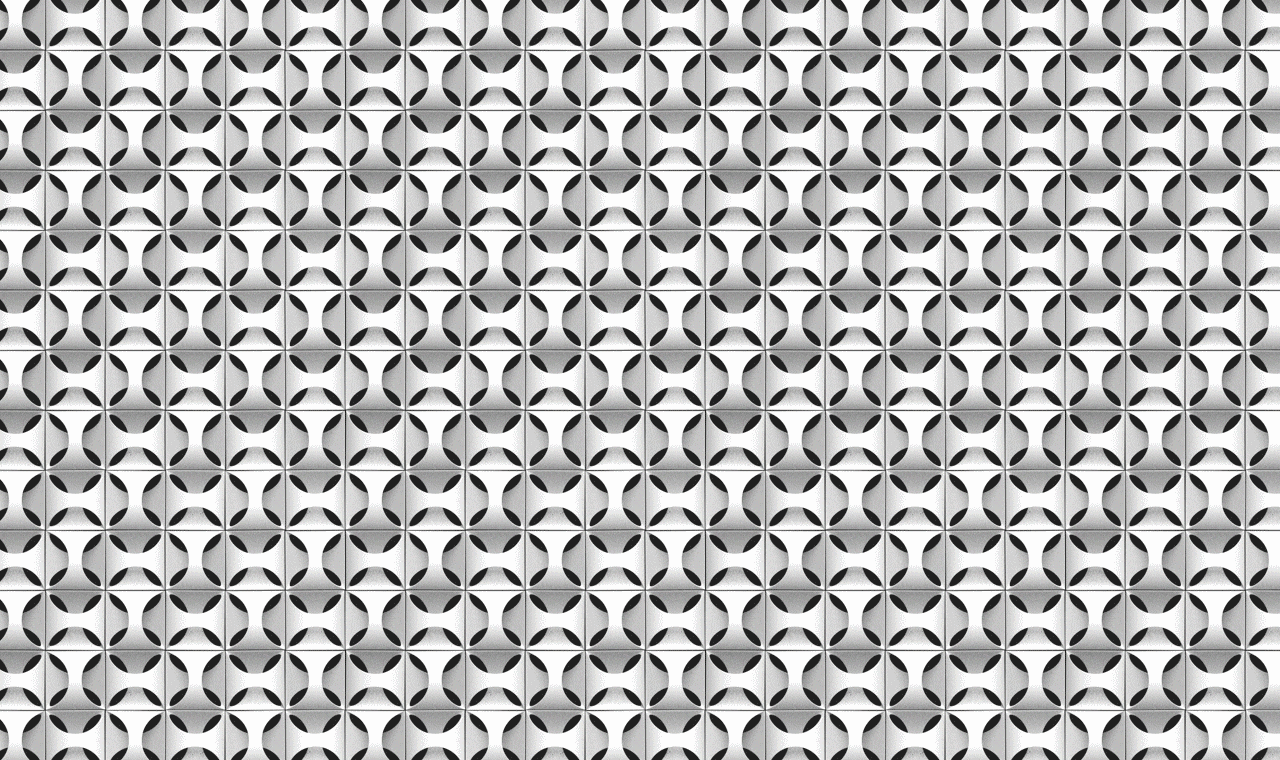
The famous Horten façade: Eiermann developed a superior, abstract facade without reference to its urban context.
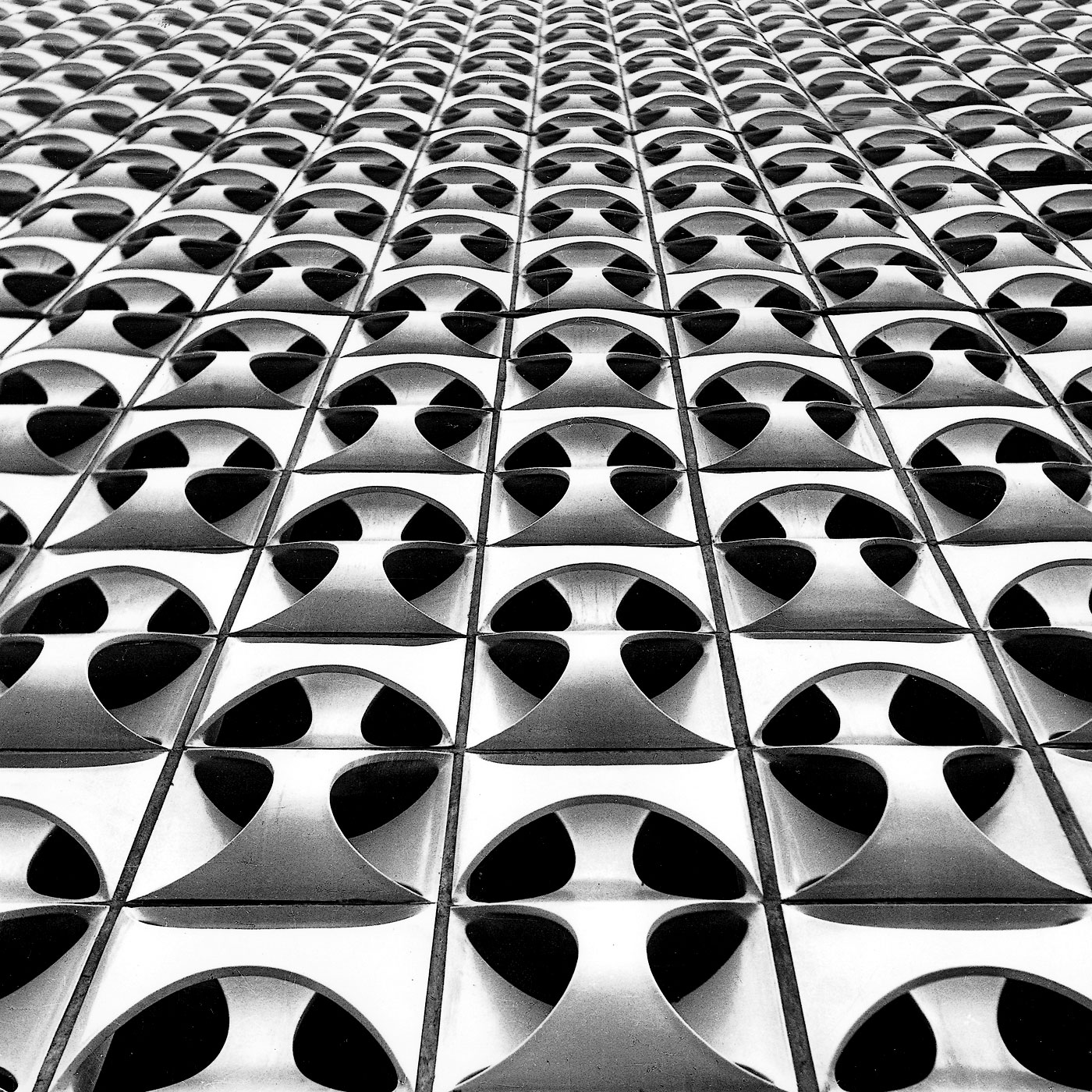
Eiermann’s new construction in 1961 represented one of the most famous buildings of post-war modernism in Germany – in a central area of what was then West Berlin. The modern ensemble of octagonal nave, separate bell tower, foyer and chapel displays a responsible and reflective handling of issues around post-war reconstruction.
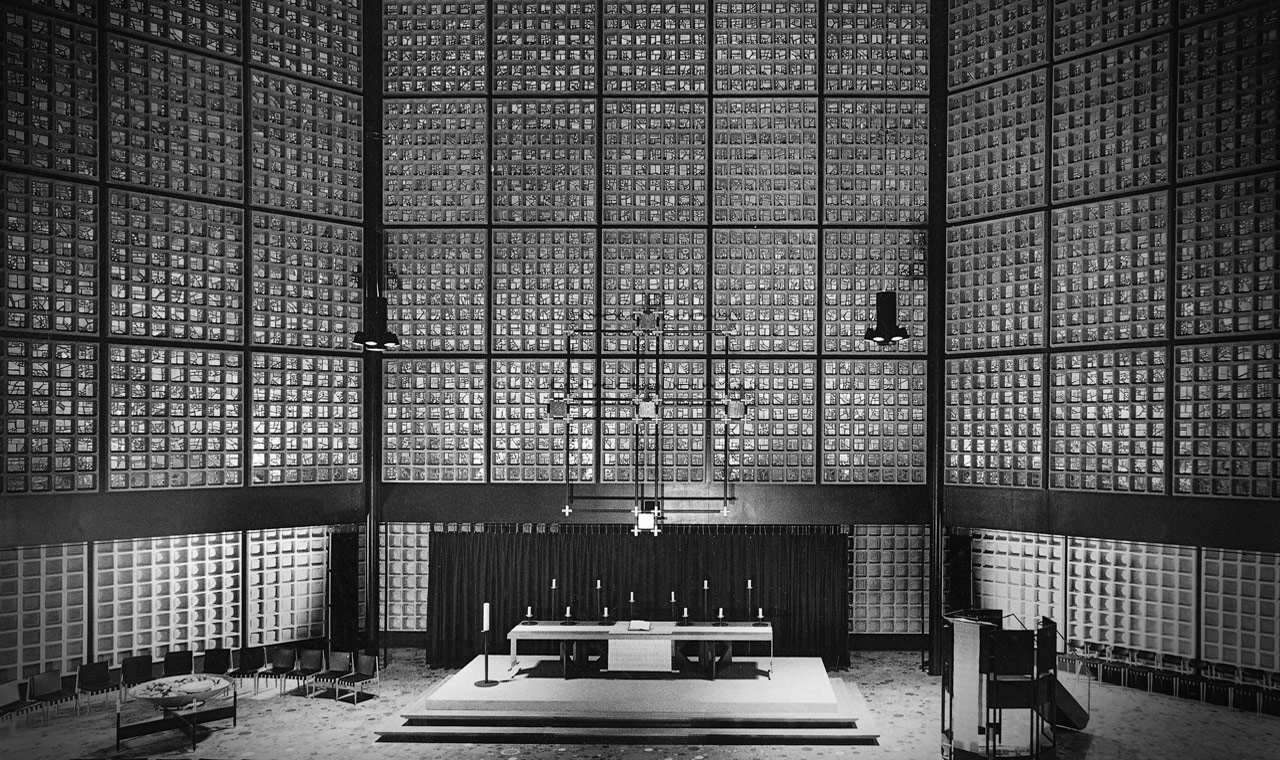
Part of the Eiermann new construction of the Memorial Church, Berlin: seating for the building restored by VS in the company-owned training workshop.
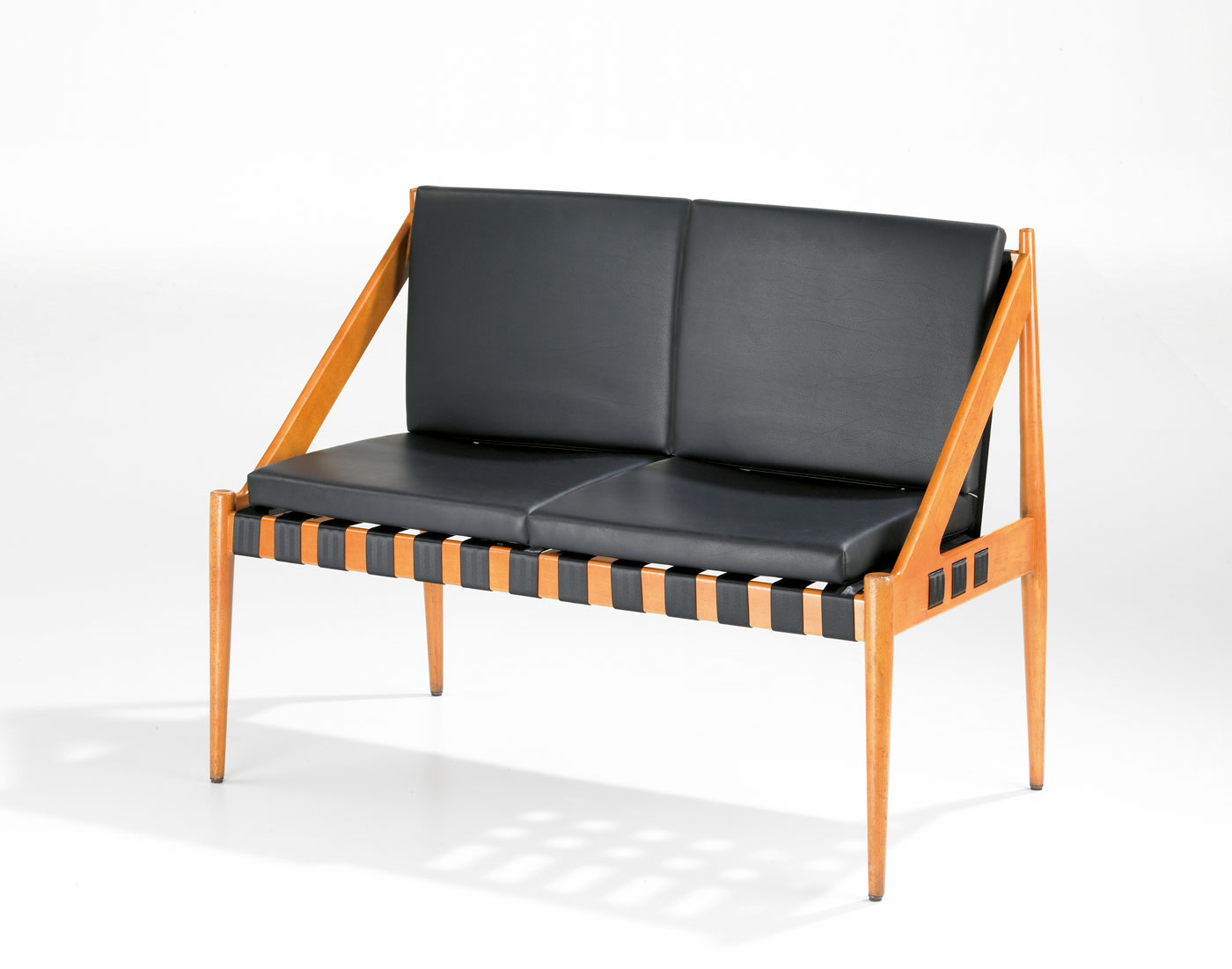

Eiermann won the competition and implemented the reconstruction of the Kaiser Wilhelm Memorial Church in Berlin.
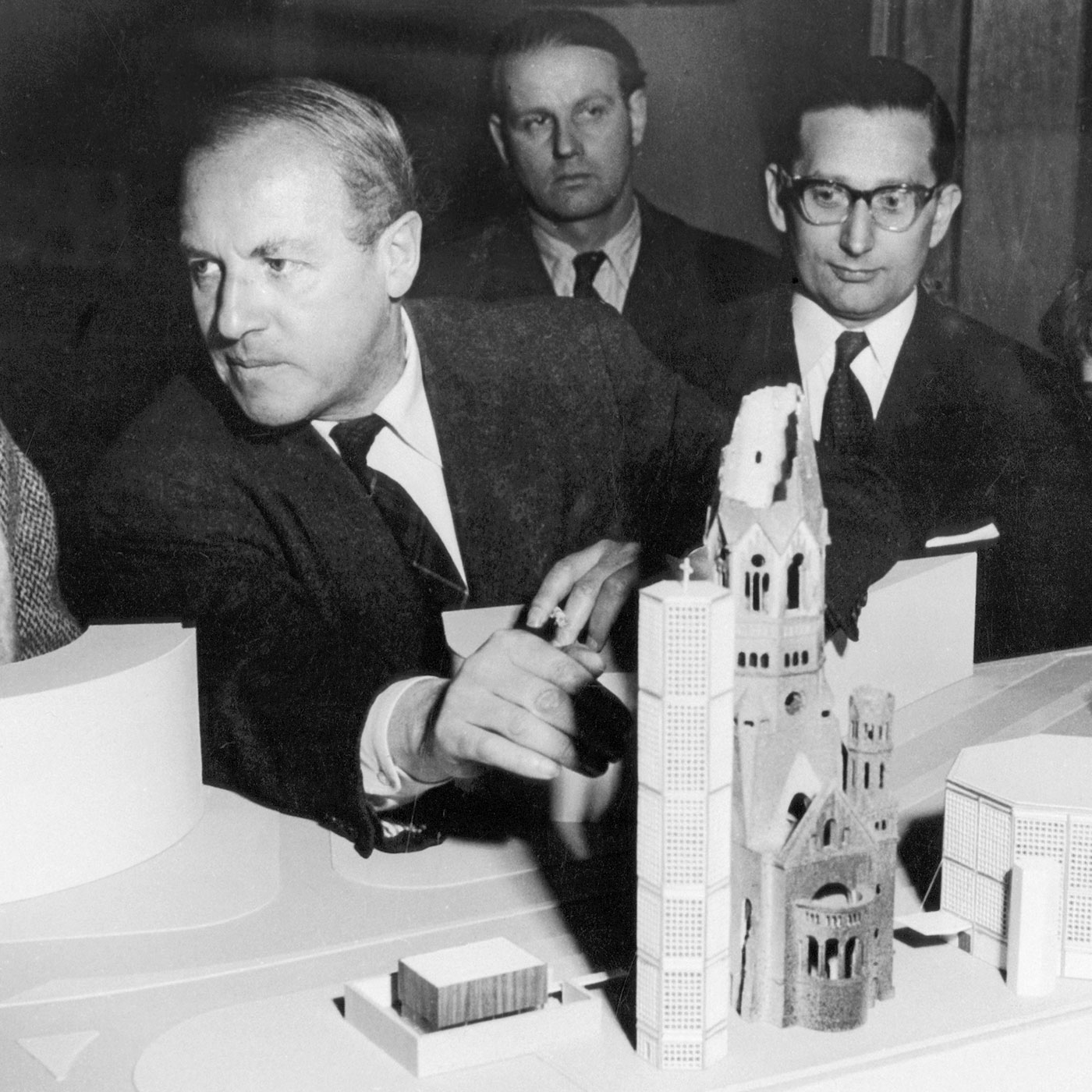
Eiermann conceived a terraced construction for the German Embassy in Washington, integrated into the grounds.
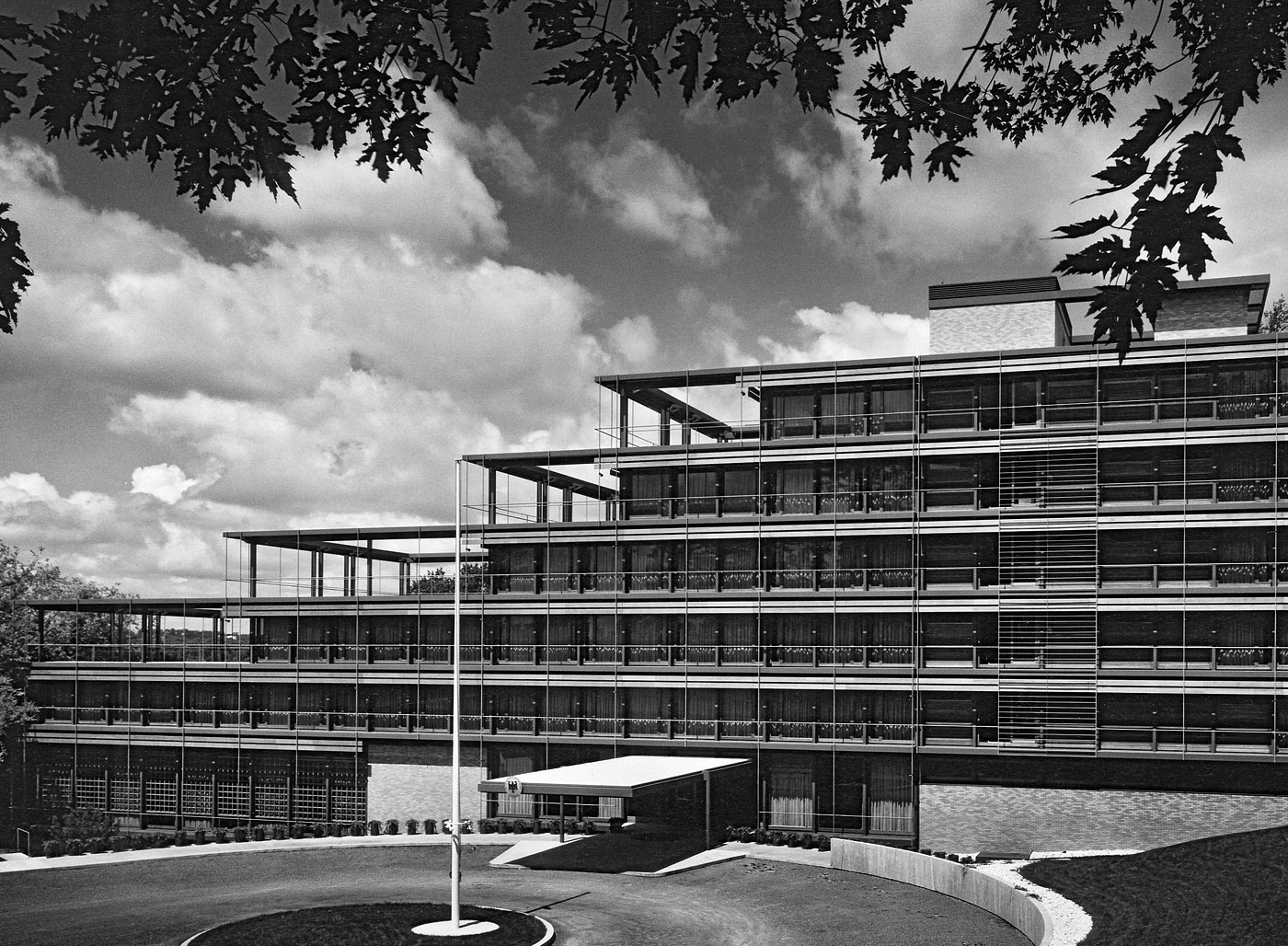
In 1953 Eiermann designed the famous E1 metal table frame for work in an architect’s office. The construction consists of two side-piece frames securely welded to the table frame with a diagonal cross-shaped rod; on the top was a simple wooden board. In 1965 his assistant modified the table to create the E2 that could be dismantled and transported.
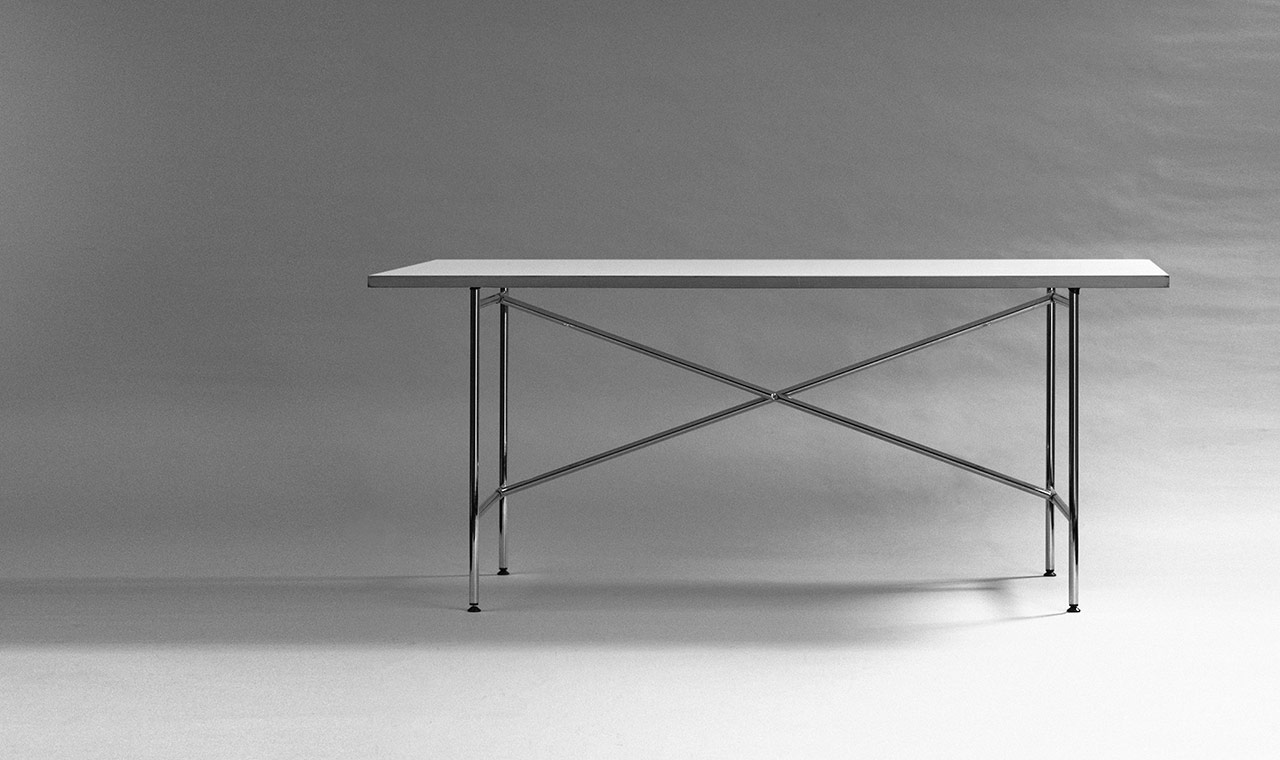
Main headquarters of IBM in Stuttgart – one of the most important buildings of Eiermann’s later work.
The Olivetti high-rise towers in Frankfurt were not finished until two years after Eiermann’s death.
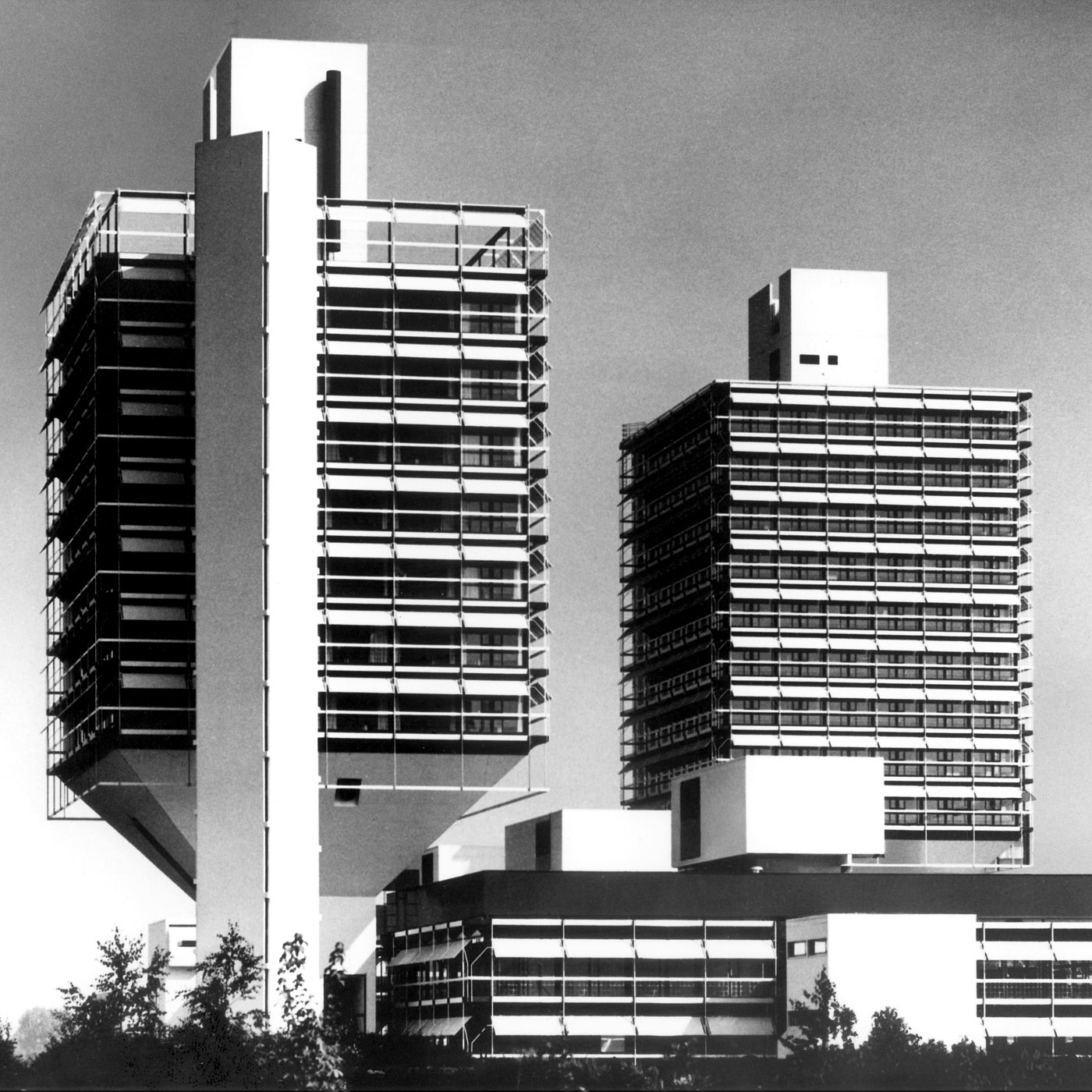
Egon Eiermann is seen as the architect of the early Federal Republic period. Not least for his parliament high-rise building in Bonn, inaugurated in 1969. As an architectural expression of early post-war democracy, Eiermann’s concept was of logic, purity and clarity.
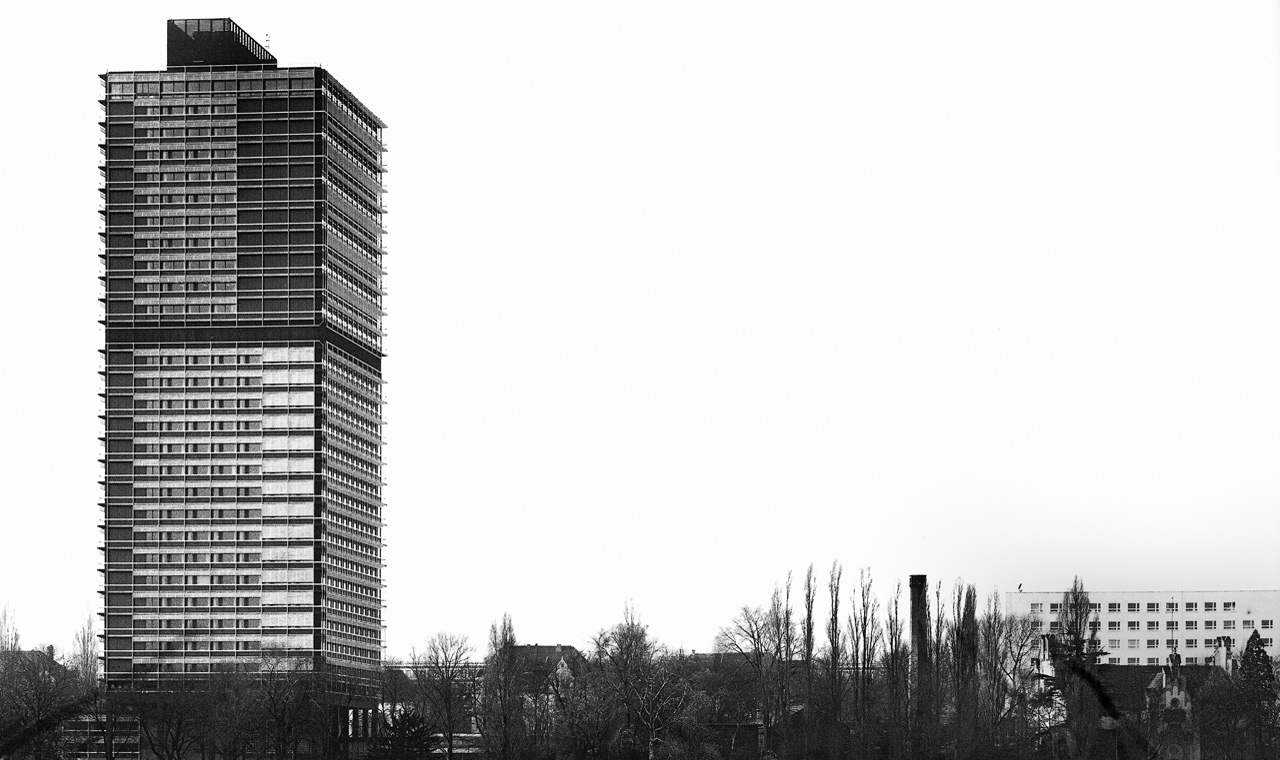
The Parliament high-rise in Bonn, known as the Langer Eugen, is one of the most famous of Eiermann’s buildings.
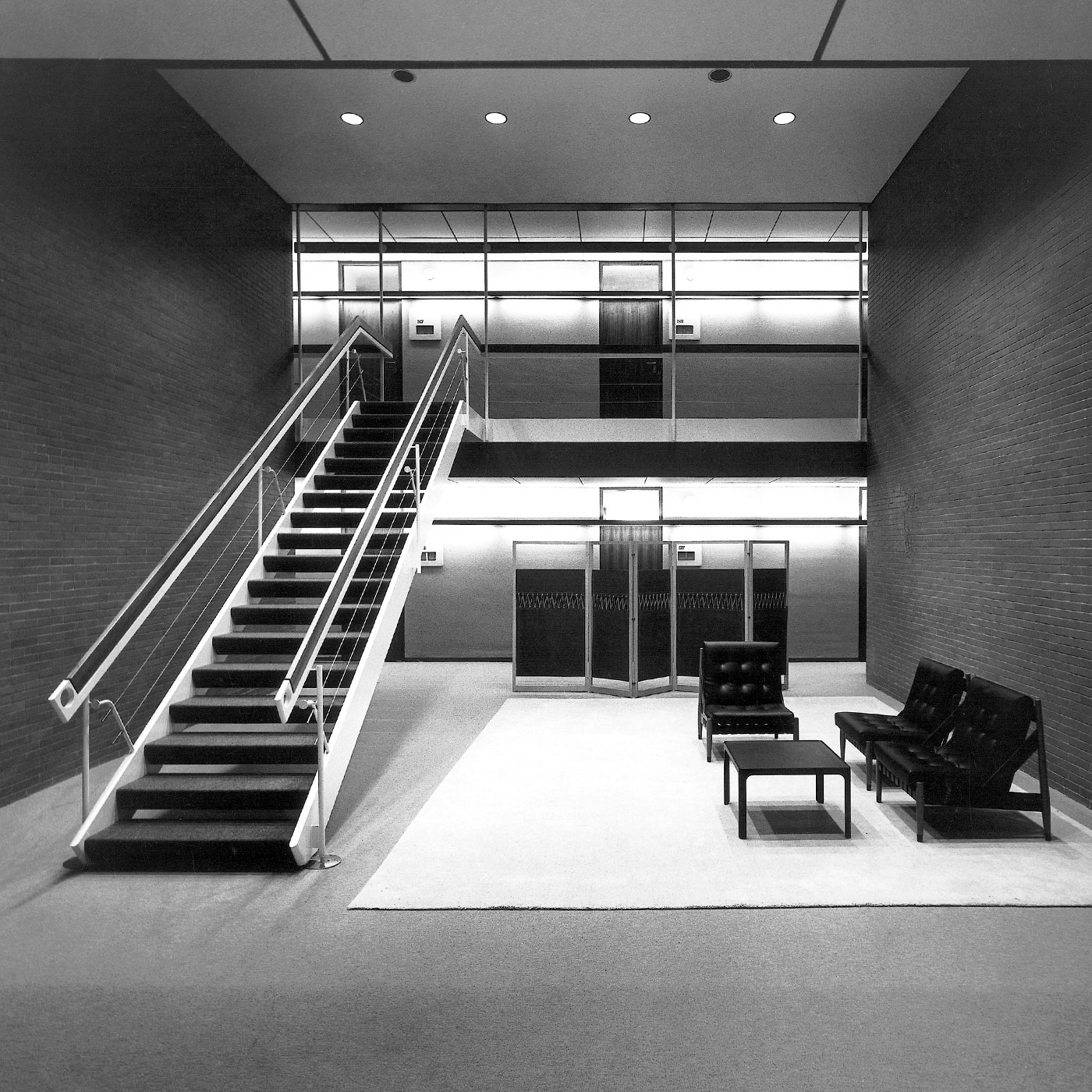
Amongst a number of other great exponents of German post-war architecture, Egon Eiermann was a champion of functional aestheticism and constructional clarity. He was one of the most significant advocates for the rebuilding of a war-ravaged Germany. The continuation of modern building in the young, cosmopolitan Federal Republic owes much to his influence.
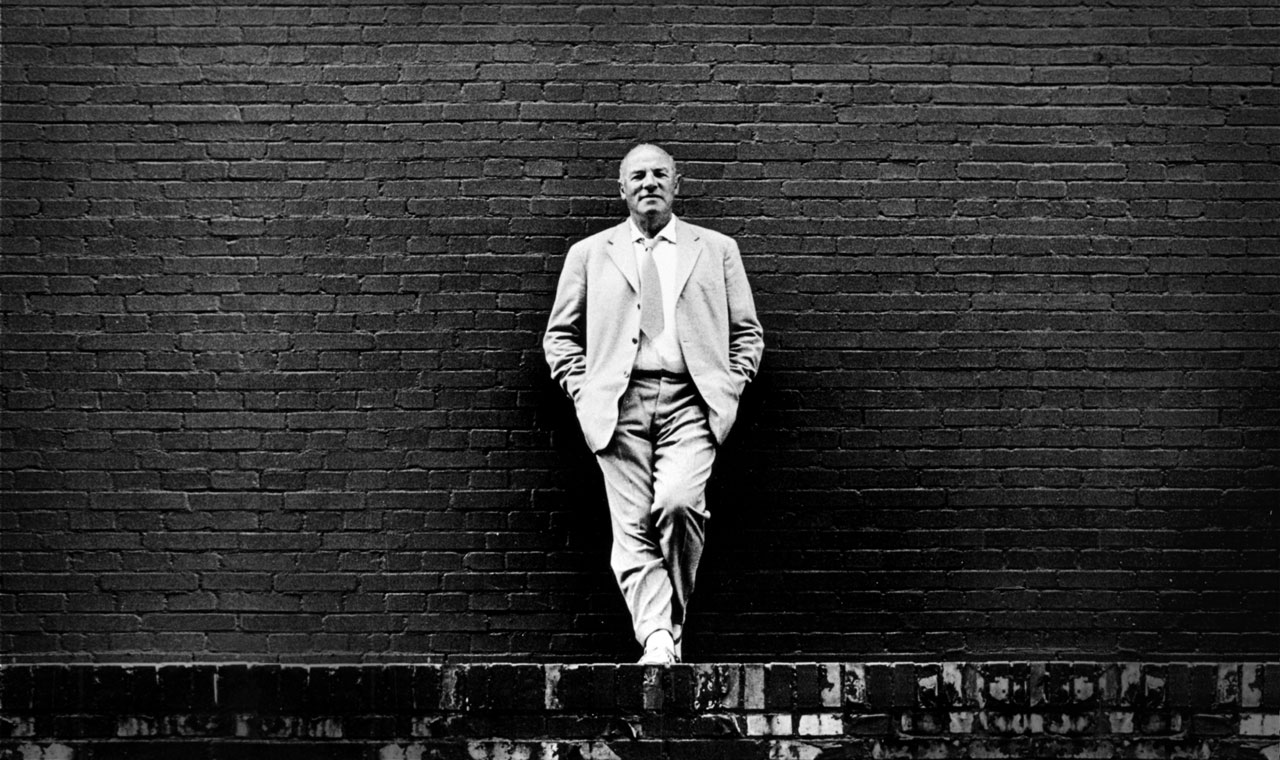
As an architect, furniture designer and college teacher he was an important inspiration in post-war Germany: Eiermann died on July 19, 1970.
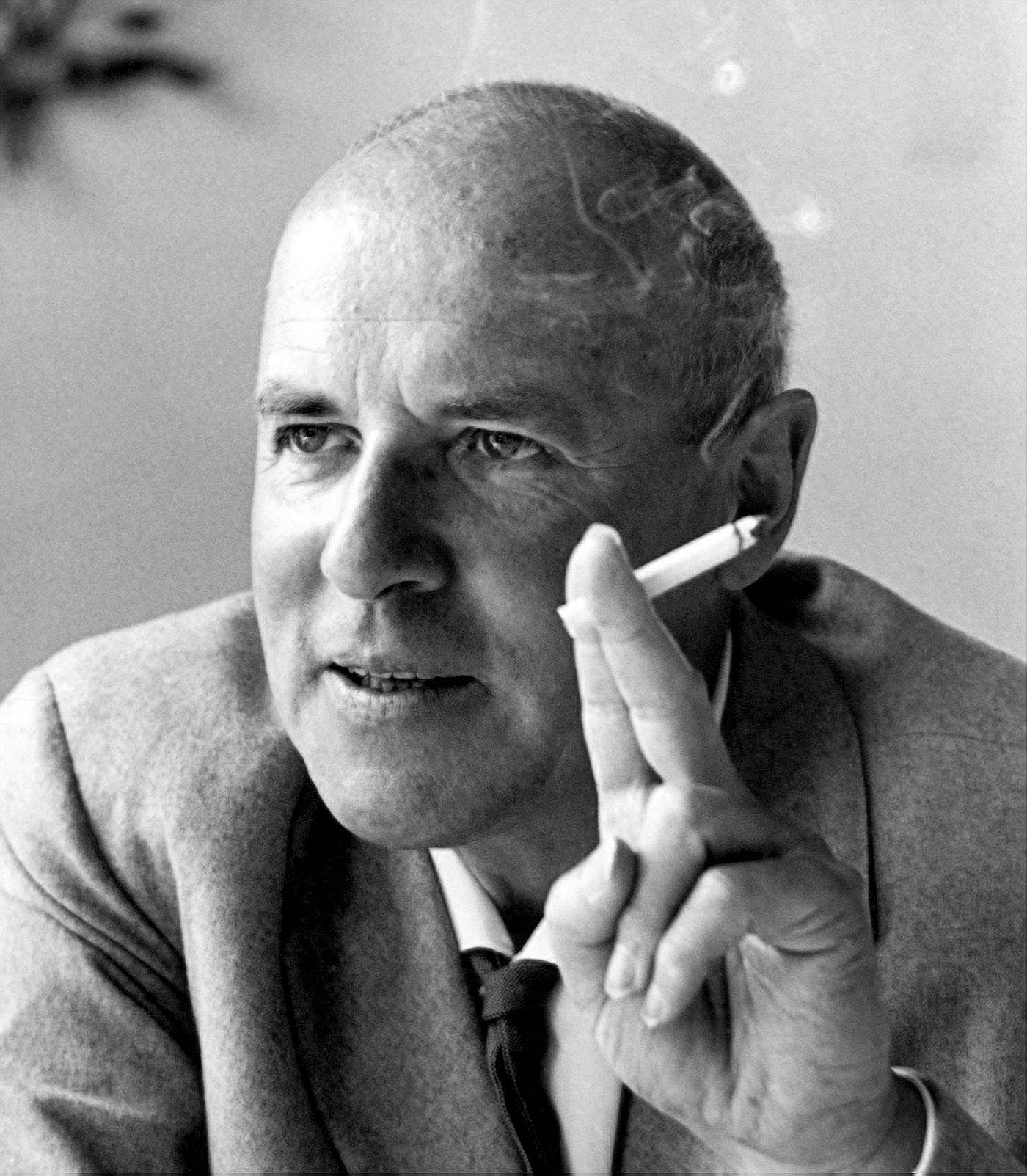
A German postal service stamp was dedicated to the memory of Egon Eiermann.
For the „Eiermann-collection“, the lisensor is Wilde+Spieth.
